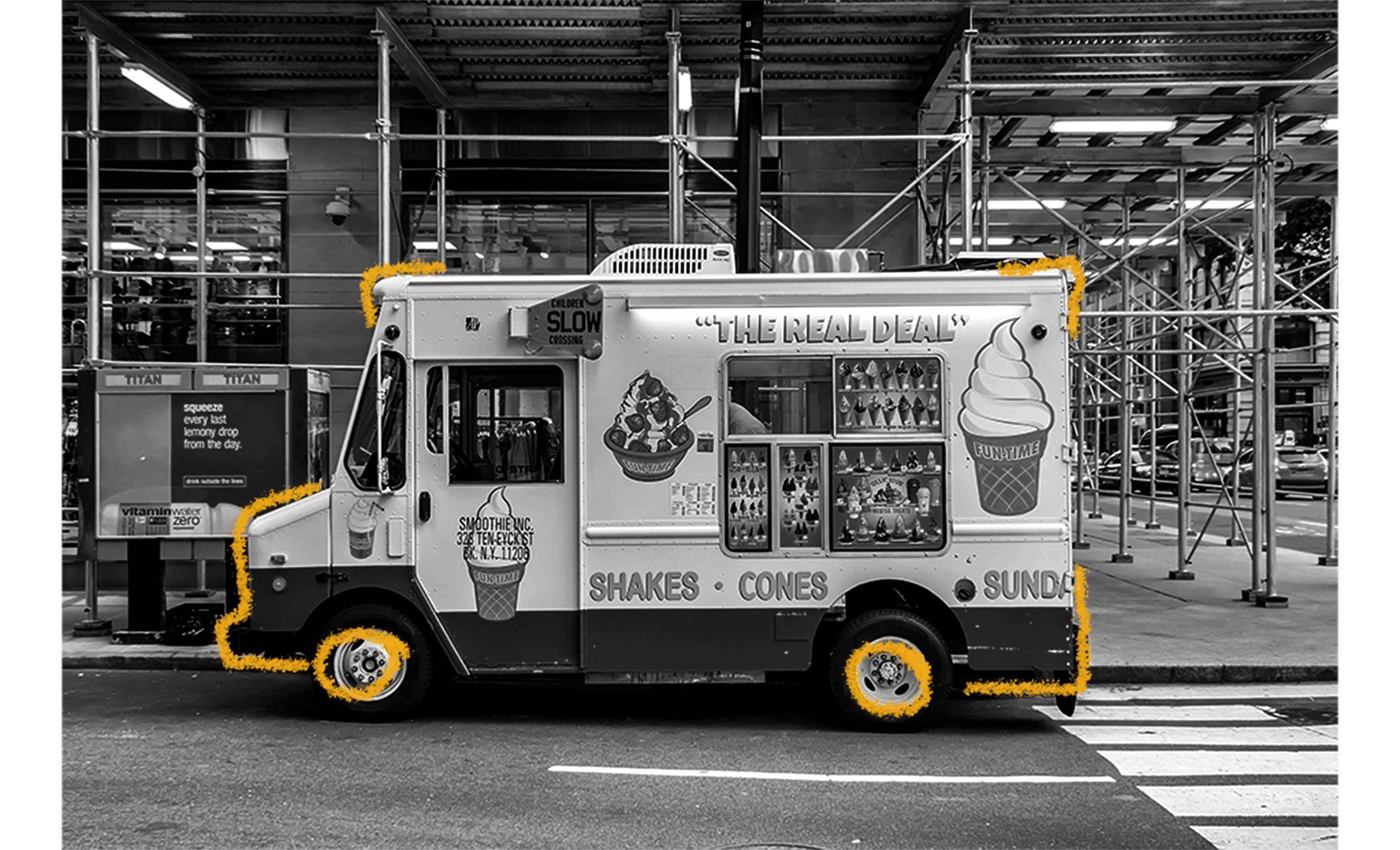In 1920, Harry Burt created the Good Humor bar, a chocolate-covered ice cream treat on a stick. Burt was already selling packaged ice cream by truck, but he quickly realized that this new handheld bar could be sold directly to consumers on the street. He purchased 12 refrigerated trucks, equipped them with bells, and sent them out to sell Good Humor bars. The ice cream carts of the time had a reputation for using low-quality ingredients and were often a source of food poisoning, so Burt set his Good Humor trucks apart by focusing on appearance — sparkling white trucks and uniforms. Good Humor ice cream trucks also got a boost from Prohibition — ice cream consumption rose an estimated 40% during the 1920s. By the mid-1930s, Good Humor trucks could be found throughout most of America, and by the 1950s, the company had a fleet of 2,000 ice cream trucks. After World War II ration bans were lifted, ice cream popularity soared and many other ice cream truck businesses started up. Good Humor continued to profit until New York City charged the company with hundreds of counts of falsifying food safety records in order to hide evidence of bacteria in its products in 1975. This, combined with other factors, led Good Humor to focus exclusively on grocery store sales. Another famous ice cream truck company is Mister Softee, which was started by brothers William and James Conway in Philadelphia in the mid-1950s after they developed a specially designed ice cream machine that was designed to function in the back of a moving truck. Later, they sold their trucks as franchises. Today, ice cream trucks are on the decline due to rising costs of operation, but there are still trucks on the road in many parts of the country.

Your go-to guide for weird history facts
Subscribe to the FREE daily email that makes learning about history fun.


